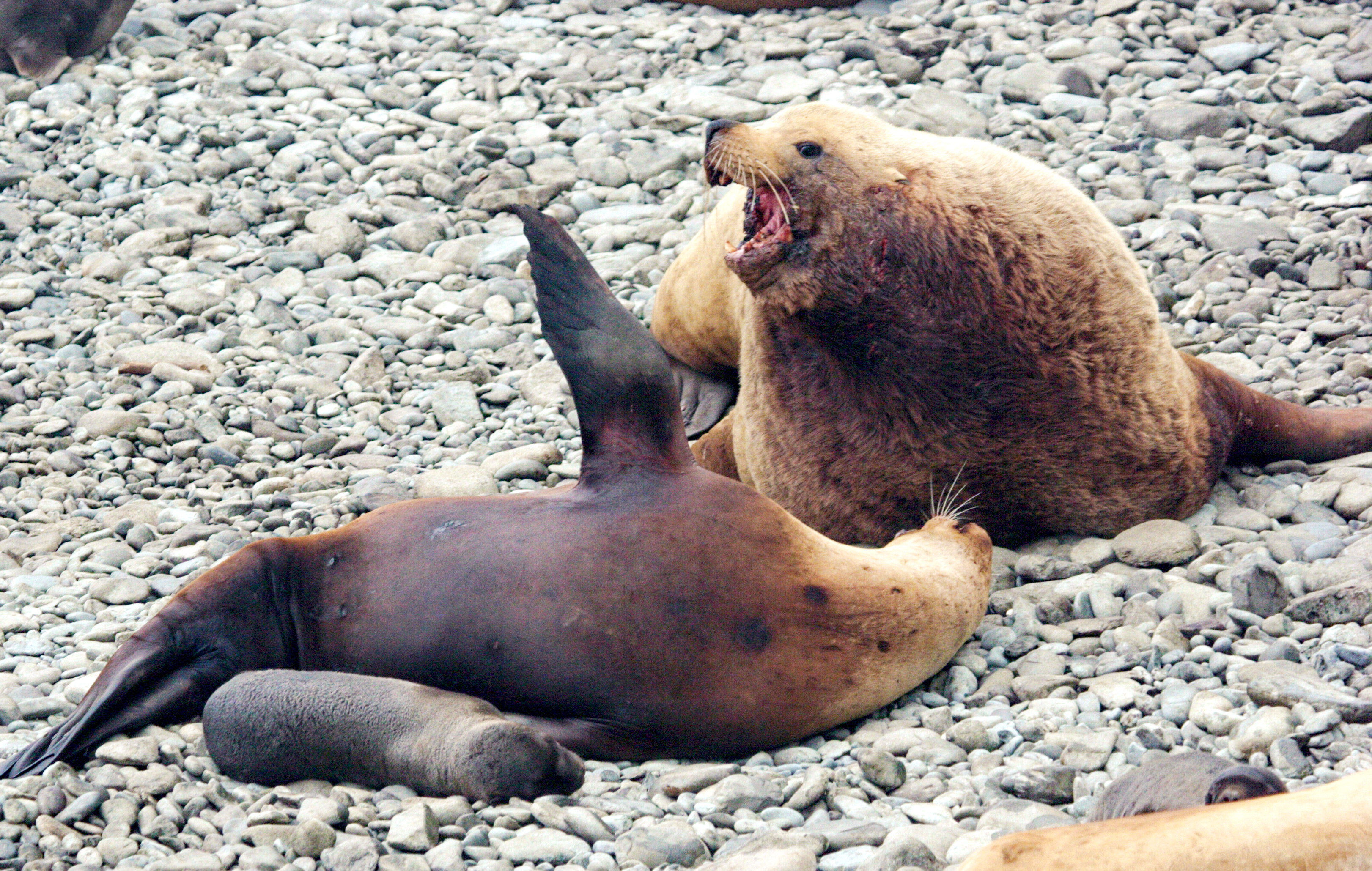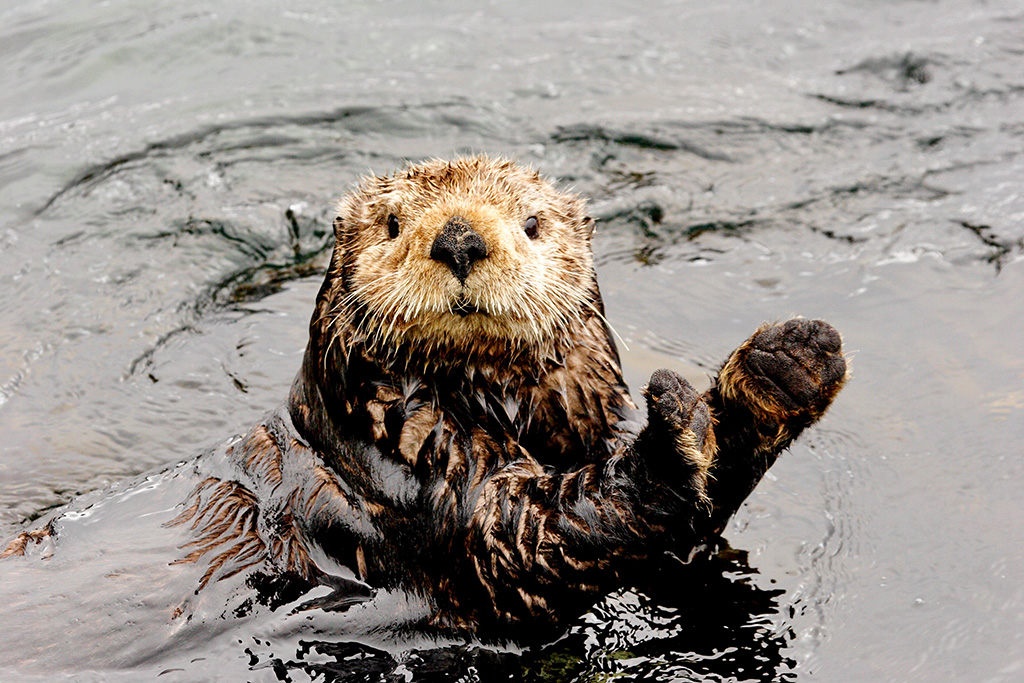The Commander Islands Nature Reserve has conducted counts of Red Book marine mammals, which live in the water area and on the rookeries of the reserve. The collected data will draw a general picture of population state for sea lions, harbor seals and sea otters.
The number of sea lions is decreasing
In summer the number of sea lions is usually counted in the end of July, right after the breeding season and birth of the pups.
In July the team of the reserve collected information about the breeding and resting spots of the animals. The counts were conducted on Ary Kamen. Here we regularly see the birth of two or three sea lion pups. We also counted on Severo-Zapadnoye and Severnoye rookeries, on haul outs near Manatee Cape on Bering Island and on Bobrovye Kamni near Medny Island.
The Results from Yugo-Vostochnoye rookery on Medny Island, where the majority of sea lions on the islands live, will be given to the reserve by Vladimir Burkanov research group from Kamchatka branch of Pacific Institute of Far East Geography RAS, which work on this rookery.

Red Data Book sea lions. Photo by Evgeny Mamaev
“As a result we will have all necessary data about numbers, age and sex proportions of the sea lion population and space distribution on the islands in 2019. We try to conduct such work every year to follow the dynamics of population rates on the Commander Islands,” said Deputy Director for Science Evgeny Mamaev.
The trend of the recent several years is that the number of sea lions on the rookeries during breeding season is lower. For example, five years ago we counted up to 500 adults on one spot and later the number there was only 350 to 400 animals. The data from the largest rookery on Medny Island will show if the trend persists.
Counting of sea lions on the rookeries of Bering Island. Photo by Ulyana Ledok
“In June and beginning of July the rookery is mainly occupied by the animals taking part in breeding. We see that some sea lions skip this period and come to the rookery in early August, when the breeding is over,” said Evgeny Mamaev.
The reasons of the decrease are still unknown. We have only hypotheses, one of which is that the animals lack nutrition.
First counts of harbor seal on Medny Island
Together with sea lions population the researchers counted numbers of another Red Data Book species – the harbor seal.
This year the counts took place near Tonky Cape, Prolivnoy Cape and in Staraya Gavan and Buyan Bays on Bering Island and on Toporkov Island. This haulouts are traditionally numerous with up to 80% of all the Bering Island population of the harbor seal.
Red Data Book harbor seal. Photo by Anastasia Panfilova
We used a quadrotor to see all habitats of the animals. It gave us a chance to acquire objective data about numbers of adult harbor seals and their pups. Moreover, this year we counted the with use of drone on Medny Island. “We travelled all along the coastline of the island and registered places, where harbor seals had their rest. If needed we could even count the animals right during flying the drone,” said Evgeny Mamaev.
The main way to count the number of the Commander Islands harbor seals in previous years was to extrapolate previous data and proportion of animals on Bering Island and Medny Island. Today the Commander Islands Nature Reserve has accurate information about harbor seals numbers, which had all been acquired by direct counting.
New data about sea otter numbers
The last counts of the sea otter on Bering Island were organized in 2017. General counts all around the Commander Islands took place in 2016. Three years later, it was time to refresh our data and to conduct general monitoring in the water around the four islands.
Sea otter on the coast of Bering Island. Photo by Anastasia Panfilova
Unpredictable weather of the Commander Islands let us to conduct this research for only one week, as a result we have updated our information about sea otters.
The Commander Islands Nature and Biosphere Reserve will publish the results of the three endangered species counts in two weeks. The data will show the changes in the three populations.
The Commander Islands Nature and Biosphere Reserve Press-Service










